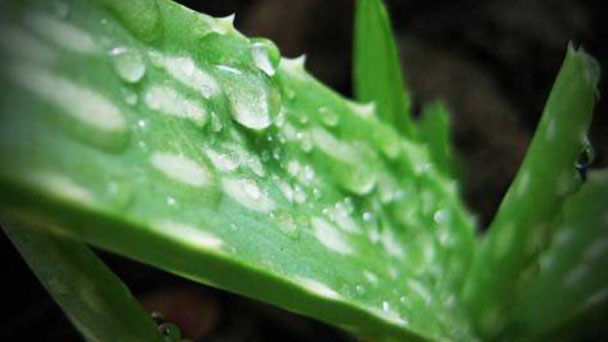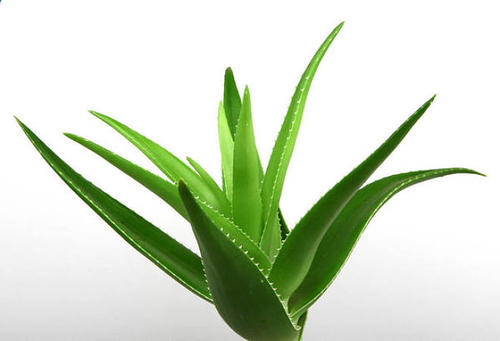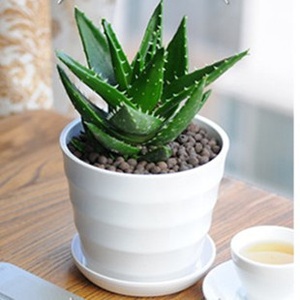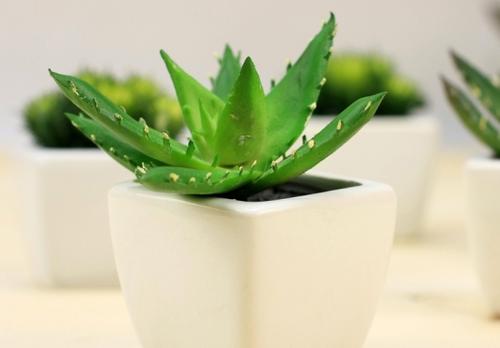How to care for Aloe
Written by Maggie
Sep 09 2021

Aloe is the plant that everybody is familiar with, and many of us also like it very much. Aloe can purify air, more good-looking. Aloe has many varieties. But when growing Aloe, how to care for Aloe if Aloe turns brown or Aloe leaves turn yellow? The following are some caring tips of Aloe.

Aloe - Most Common House Plant
How to care for Aloe turning brown
1. Increase light for Aloe
Aloe likes the sun, and enough attention will encourage Aloe to grow, making its leaves thicker and greener. Long maintained in the shade, Aloe will grow slowly and leaves turn brown. Maintaining a ventilated and bright place, when summer illumination is intense, we can undertake appropriate shade protection.
2. Trim the Aloe roots
During growing Aloe, Aloe had problems with its roots, and the rotting leaves turned brown.The Aloe was dug out of the pot, the damaged roots were pruned, soaked in a solution of carbapenem and disinfected, then replanted in loose, fertile soil. The Aloe was preserved in a ventilated, dark place and waited for its recovery.
3. Control water and fertilizer for Aloe
Aloe leaves are thick and water-tight, so they don't need to be watered too much during growth. This can cause root rot and turn brown. Water thoroughly each time to keep the soil moist and apply appropriate NPK fertilizers to promote Aloe growth.
4. Pest control of Aloe
Aloe gets browned when it's invaded by pests. It is necessary to spray insecticide in time for effective prevention and control. Maintain Aloe in a well-ventilated place. Remove the damaged blades in time to ensure air circulation. The environment is dry in summer, and you can spray water in the air and the surface of the leaves. Do a good job of cooling and moisturizing.

How to care for Aloe leaf yellowing
1. Watering for Aloe
Aloe is very drought-tolerant, requiring little moisture and does not require excessive watering. During the growing season of Aloe in the spring and autumn, water once a week. In winter, when the temperature drops by half a month, water once a week. Water Aloe thoroughly. Standing water causes root rot and the leaves turn yellow.
2. Temperature for Aloe
Aloe grows at a temperature between 5℃ and 25℃ and prefers a cool environment. Aloe needs to be protected from rapid evaporation due to high summer temperatures. In winter, when the temperature drops, leaves will be frostbitten due to low temperature, and yellow leaves will appear, which need to be cured in the Aloe storage room.
3. Fertilization for Aloe
Appropriate nutrients could promote Aloe growth. Poor soil conditions could cause Aloe to grow thin and yellow. Aloe can be applied 2 or 3 times in the growth stage, pay attention to concentration control. The growth of Aloe leaves was promoted by direct watering of the rice washing water. In winter Aloe entered the dormant period and the fertilization should be stopped.
4. Pests and diseases of Aloe
Aloe is vulnerable to rust and leaf blight, which quickly infests the leaves and causes yellow leaves. Aloe was maintained in a ventilated place, diluted with chlorothalonil powder, and sprayed three or four times a year at the frequency of once a month to effectively prevent and control the disease. If it is an insect pest, it can spray oxydimethoate solution, according to the frequency of spraying once a week for control.

Latest Updated
- Benefits of Bugleweed - 7 Science-backed Health Benefits
- Bugleweed Dangers & Side Effects - Is It Poisonous?
- How to Plant Evergreen Trees - What You Should Know
- When to Plant Evergreens - Grow Guide for Evergreen Trees
- 12 Wonderful Evergreen Shrubs for Your Garden
- 12 Popular Evergreen Plants with Pictures for Beginners
- When And How To Prune A Lilac Bush Like a Pro
- How to Grow & Care for Lilac Vine (Hardenbergia Violacea)
- Japanese Lilac Tree (Syringa Reticulata) Care & Propagation Guide
- Shumard Oak Pros and Cons - What to Know
Popular Articles
- Winter maintenance of Antirrhinum Majus
- How to Grow Terminalia Mantaly Tree
- How to Grow and Care for Crossostephium Chinense
- How to grow Antirrhinum Majus in spring
- Peristeria Elata (Dove Orchid) Profile: Info & Care Guide
- Underwatered Snake Plant (Sansevieria Trifasciata) - Signs And How To Fix
- How to Care for Brazilian Jasmine Plant (Mandevilla Sanderi)
- How to Grow & Care for Graptopetalum Purple Delight in Summer
- Rosa Chinensis (China Rose): Plant Growing & Care Tips
- How to Care for Baby Sun Rose (Aptenia Cordifolia)